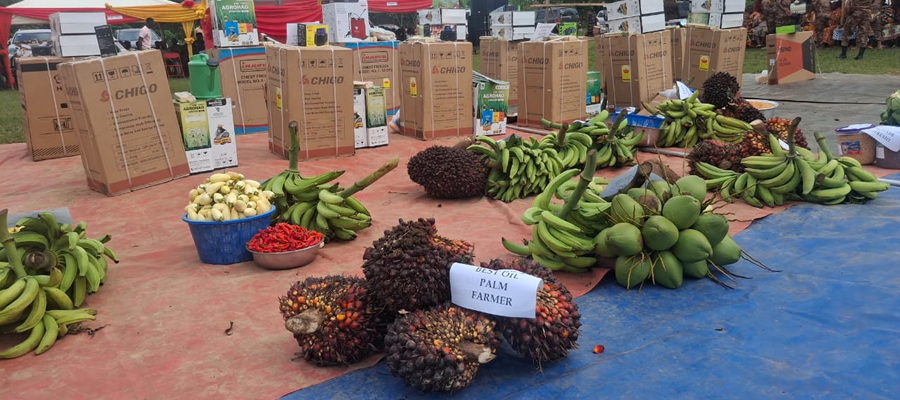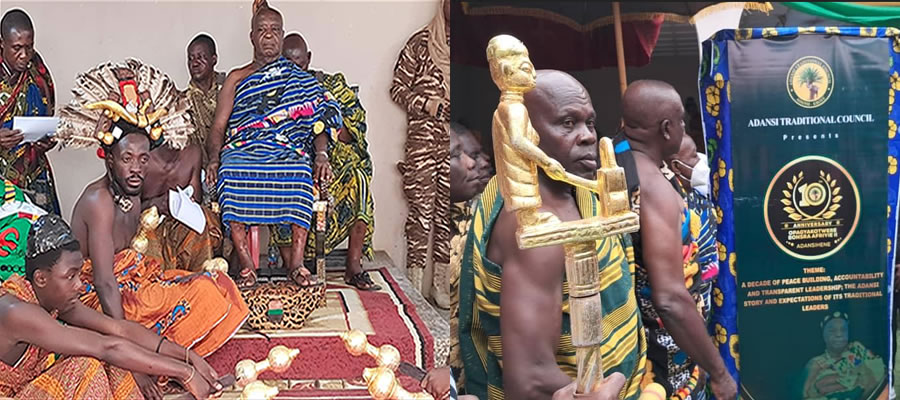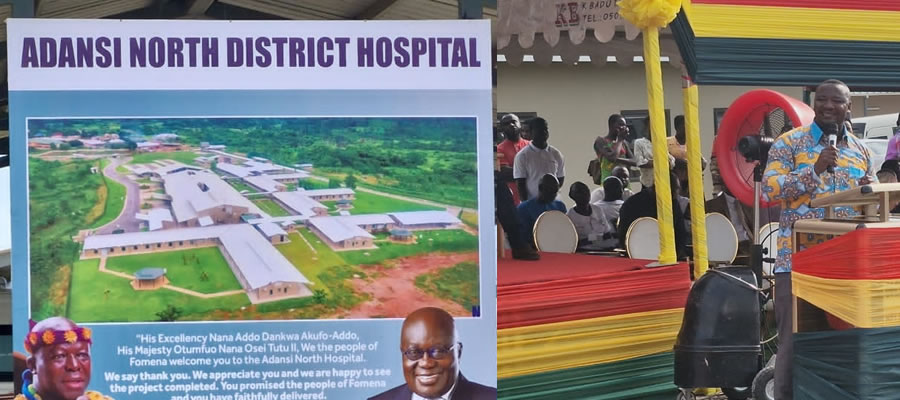

POPULATION SIZE AND GROWTH RATE
The district’s projected population stands at about 118,068 based on the last census conducted in 2010 with a growth rate of 2.6% per annum. The population density is about 94 persons per square km. the male-female ratio is 49.5% to 50.5%.
There are 125 communities in the district. However, only five (5) of them have urban characteristics with population of 5000+. The Table below depicts some of these communities and their population as at the year 2010 when the Population census was conducted.
POPULATION DENSITY
The District had a projected population of 120,000 with a land area of 1140 sq km. Thus the population density of the District stood at 105 persons per square kilometer. This puts pressure on social amenities in the urban areas while facilities in rural areas are underutilized.
HOUSEHOLD SIZES AND CHARACTERISTICS
The average household size in the district is about 5.3 persons. This means the household size in the district is bigger than the national rural household size of 5.2 persons per household. The implication is that each household has more people to feed, clothed and shelter. Thus poverty is very endemic in the district.
RELIGIOUS COMPOSITION
Three main religious groupings can be found in the district namely, Christianity, Islam and African Traditional Religion. Christians form about eighty-five (85%) while those in African Traditional Religion form about 11% and Islam forms about 3.5% and the rest which is 0.5% goes to the other forms of religion. The highest percentage of Christians in the district is an advantage to infrastructural development in areas of health and educational facilities. For example, Benito Menni Health Centre at Dompoase.
AGE AND SEX COMPOSITION
The male – female ratio is 48.6% to 51.4%. About 48% of the population is the active labour force (15 – 60 years). The age dependency ratio is high i.e. 48:52,
OCCUPATIONAL DISTRIBUTION
The dominant occupation in the district is farming which constitutes about 77%, followed by commerce which is basically buying and selling also constitute 10%, services also take about 7% and industry takes 6%
MIGRATION TRENDS
Migration is a major challenge in the district. This is because the main occupation in the district is agriculture and therefore those who are not interested in agriculture especially the youth migrate to nearby Obuasi District where gold is being mined to seek for employment. Others also move to Kumasi where other business is very lucrative. The implication is that the Youth who are very energetic leave the district leaving the aged to do the farming activities hence their output is very low.
RURAL - URBAN SPLIT
Looking at the district set up, rural dwellers constitute about 82,524 which is 68.8% as against urban dweller who also constitutes about 37,476 which is 31.2%. Thus, the district is unable to attract high level investment and infrastructure like banking, second cycle institution, market centres etc. Rural-urban migration is very high in the district due to its proximity to Obuasi, Bekwai and Kumasi. This therefore negatively affects agricultural development in the district as the young and energetic people migrate to the urban centers leaving the weak and the aged back to engage in agriculture in the district
DEPENDENCY RATIO
Even though the active population constitutes 48% of the population that is, between 15 – 60 years. However, majority of the age bracket between 15 – 25 years are either in school or in apprenticeship. Apart from this, others between 26 – 60 years are also under employment or unemployed. Thus the actual working force is about 35% who are feeding the remaining 65% leading to high dependency ratio of 1:2. The district has a high dependency ratio of 1:3. This makes it difficult for the average worker to
enjoy any acceptable standard of living, since he/she has too many mouths to feed and is over stretched with family and societal responsibilities.
SPATIAL ANALYSIS
SETTLEMENT SYSTEMS AND LINKAGES
The Adansi North District has 125 settlements. Fomena, the capital has a very low concentration of commercial and other economic activities. It also has a population of 4,750. The highest populated settlement in the district is Akrokerrifie (8,865), followed by Dompoase (5,958), Fumso (5,421), Anhwiaso (3,794), Asokwa (3,667), Bodwesango (3,206), Kwapia (1,894), Kyekyewere (7820) and Dadwene (6010).
The remaining settlements have low population figures below 2,000. Some of the settlements can at best be described as hamlets as some have merely about one person living in them. Due to the low population of the capital Fomena, it has few technical and infrastructural services, leaving the other communities less developed. Most of the communities in the district are not more than 28 kilometers from Fomena the district capital.
Due to the low population threshold for communities in the district, the rate of infrastructural development is very low as the required threshold population to make them viable are lacking. Fomena, Dompoase, Medoma, Asokwa, Fumso etc. are more accessible, located along the Kumasi – Cape Coast asphalted road and the rest Akrokerrifie, Kwapia, Dadwen and Kyekyewere also sited along the Kumasi-Dunkwa first class road. Some of the settlements have accessibility problems with road network almost impassable during the rainy season. The 2000 Population and Housing census revealed that Akrokerrifie has assumed urban status. Most of the 125 settlements in the District are nucleated, linear or scattered which are accessible. The table below shows some of the major settlements in the district and their population according to the 2000 Population and Housing census.
It is unfortunate to note that Kyekyewere and Dadwen had low population figures quoted from the 2010, Population census. However, the situation could be different now. These two settlements now have massive developments and indicate a high population. This fact is derived from a survey undertaken by the Town and Country Planning Department and
Building Inspectorate division of the Assembly.
ANALYSIS OF THE SCALOGRAM
The District plan preparation team selected 15 communities in the district and also selected a basic facilities and infrastructure to determine the functional hierarchy of settlements in the district. After critical analysis to determine the availability of these facilities in the selected communities, it was realized that, the District capital Fomena came first followed by Akrokerri while Dompoase also came third.
One outstanding feature of these 3 communities is that they are all Area Council capitals and have population threshold of 5000+. Fumso and Bodwesango also came fourth. Coincidentally, they are also Area Council capitals. This shows that area council capital have more basic infrastructure and basic facilities than the remote parts of the district. The conclusion is that the efforts of the district should be geared towards the remote parts for equitable distribution of resources
Date Created : 11/10/2017 2:57:13 AM













 facebook
facebook
 twitter
twitter
 Youtube
Youtube
 +233 593 831 280
+233 593 831 280 0800 430 430
0800 430 430 GPS: GE-231-4383
GPS: GE-231-4383 info@ghanadistricts.com
info@ghanadistricts.com Box GP1044, Accra, Ghana
Box GP1044, Accra, Ghana